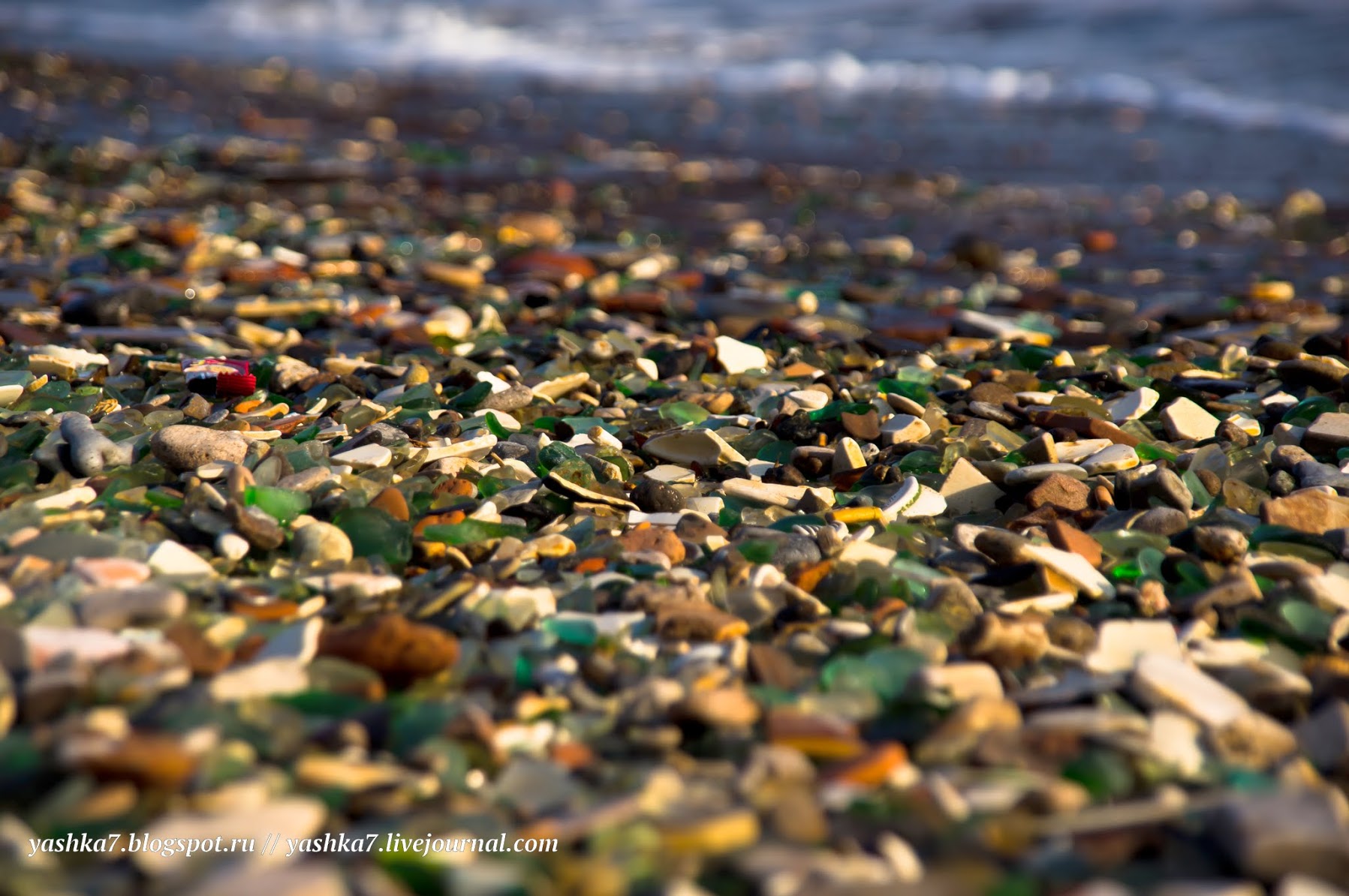Little yellow spiders on flowers. Spider-sidearm - a skilled and patient hunter from the family of arachnids
The spider team includes more than 42,000 species of arthropods, among them there are not a few creatures of the most unimaginable, and sometimes even cosmic forms. A special place in this niche is occupied by spiders-sidewalks, which, without a doubt, are among the most amazing spiders in the world.
Spiders-boaters or spiders-crabs (Latin Thomisidae) - a family of small arthropods from a detachment of spiders. Body length is only 5-7 mm, males are almost twice smaller than females - 5 mm maximum for them.
This floral spider-sidearm is not only named but also shaped like a crab. Photo: Almir Cândido de Almeida
First and foremost, the spider-boat spiders are unique in the incredibly strange structure of the body, which is very noticeable even with the minimum dimensions of the animal. The two front pairs of legs are 2 to 5 times longer and thicker than the third and fourth pair, in addition they are turned forward, and the males in addition are also covered with a thick wool coat.
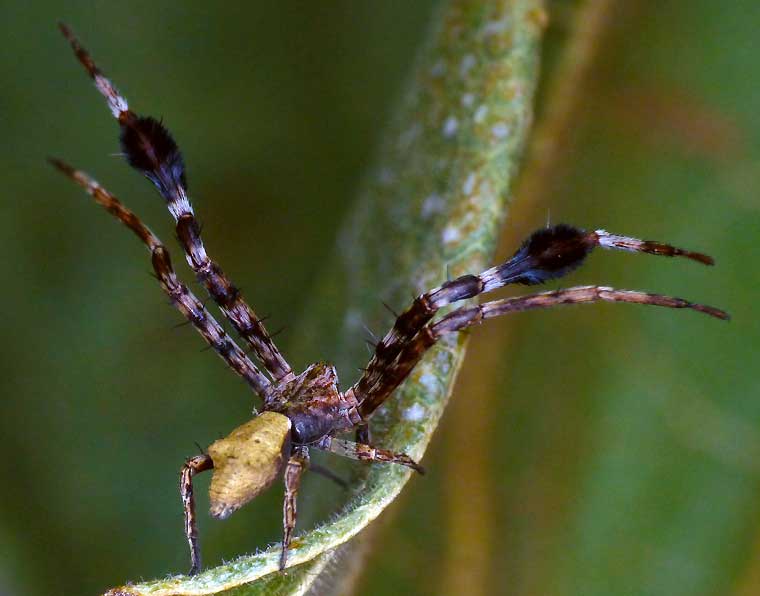
Spiderman Stephanopis barbipes. Endemic species of Australia. Credit: Robert Whyte
This unusual shape of the limbs introduces serious adjustments to the ways in which crab spiders move: most of the time they are forced to move sideways, which actually led to the family name.
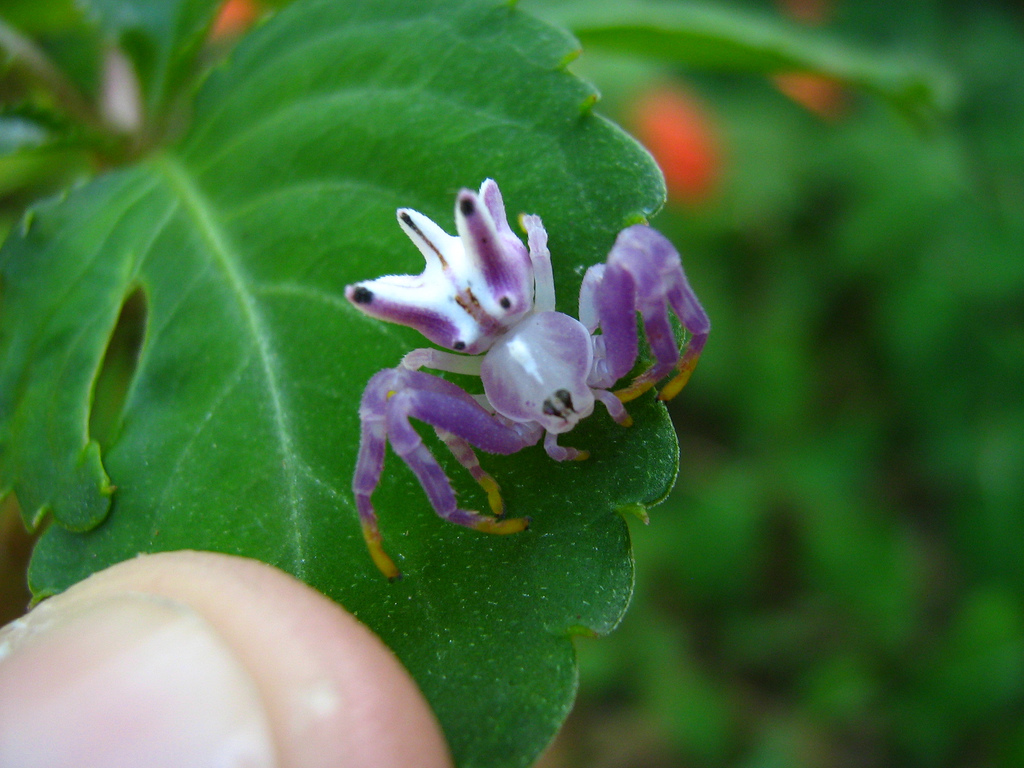
Modified forelimbs - this is the main and only weapon of the boat. Its effectiveness is high enough to refrain from weaving the web and all the other tricks.
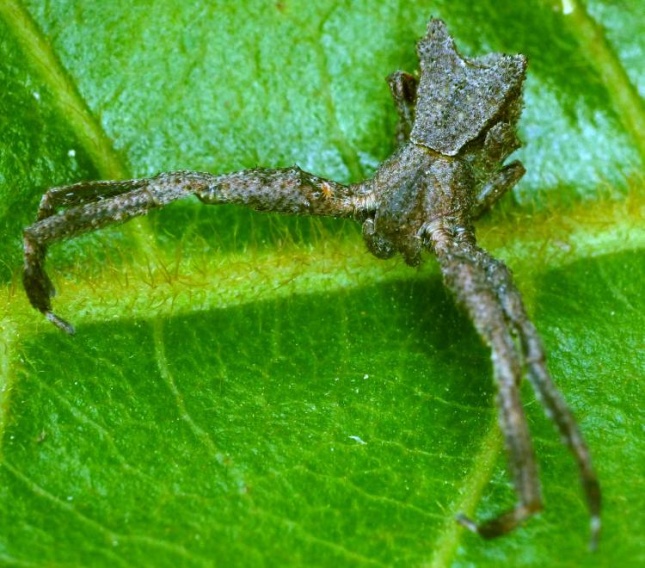
Powerful front legs are the main weapon of this family of arthropods.
Science knows more than 2000 species of crab spiders that inhabit all continents and regions except Antarctica and Greenland. Virtually all species have a masking color, which allows them to merge with their natural environment. So, for sidewalks, living on the flowers are characterized by bright and colorful colors, and for species preferring to crawl on the ground - dark colors in brown and brown tones ...

Flower spider-sidearm. Photo by Mario Martins
Some of the Thomisidae species have good acting abilities. In case of danger, they pretend to be dead, falling on their backs and stretching their front legs. Often this trick helps them to escape.
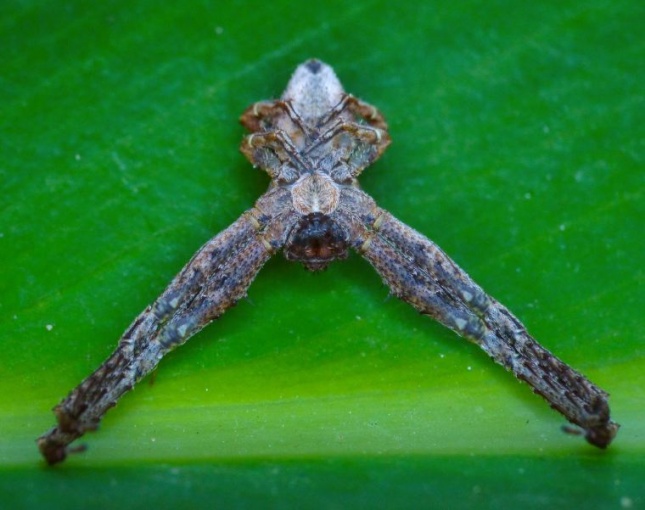
A spider, pretending to be dead.
The family of arachnids in their ranks has very beautiful and unusual creatures. They are simultaneously similar to spiders and crabs. Their name is also very interesting - spiders-sidewalks. Sometimes the creation of nature is simply incredible, as, for example, these spiders, who can skip, jump and move sideways. Due to such a peculiar way of movement, they got their name - sidewalks. They are also called spiders-horses and spiders-crabs. In appearance they are cute and pretty. Even those people who are afraid of spiders panicky, do not shudder at their sight. It is interesting that the web is needed by these handsome men only in order to move from the upper layers of plants to the lower ones. Spider strings are needed by them for marriage games. With the help of threads these little animals (and spiders are animals, and insects, as many think) attract a partner.
Spider-sidearm: description, breeding
The constitution of these animals is unusual. The front pairs of legs are longer than the others, and they are also turned upside down. It is because of this structure of the spider's legs that these wonderful creatures move sideways. The body is flat and angular in appearance. This structure makes animals very similar to the representatives of the family of crustaceans, therefore the second name of these creatures is spiders-crabs. They can also retreat back exactly as their cousins with claws.
The color of spiders-boaters depends on the environment in which they live. If on the ground, the spiders will be dark brown or gray. If the flowers, then the animals can be of different bright colors. To notice spiders is very difficult, almost impossible. Nature has given them color, thanks to which they merge with the surrounding environment.
The mating season for spider-boat starts in early June. The male searches for the female, attracts her attention to her person and starts courting. If the female responds reciprocally, the spider-sidearm climbs up on its back and moves to its genital opening. Then alternately introduces into it pedipalps, which contain seminal fluid. After the first pairing, the spiders make a small break, rest, then there is a repeated pairing. Ready-made cocoons female, to hide from predators, hides, attaching to leaves or stems of plants.
Different kinds of spiders
A spider crab or a sidearm is a common definition of many species of spiders, but most of these animals belong to the Thomisidae family. In total, there are about two thousand species of spider-boat, which are divided into 170 genera.
The most famous are the flower spiders-crabs. They hunt in flowers and are painted in bright colors. For example, in Uruguay these animals mimic tropical flowers - the spiders are very beautiful and seem quite harmless in appearance.
Excellent hunters
The spider-sidewalker is very patient. Most of the time these handsome men sit perfectly still in anticipation of prey. For hunting cobwebs do not need a web, they do not use it to catch a victim. 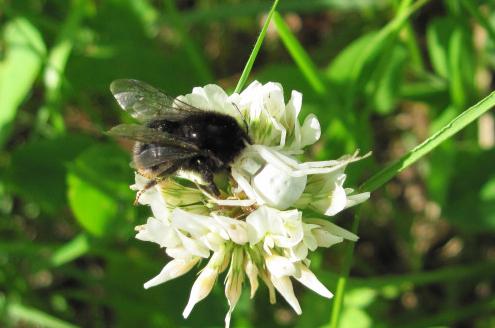 The weapons of the spiders of this species are the front legs. Having planned a target, a predator rushes to prey, using strong forelegs, bites and injects poison. It helps these creatures to hunt their ability to merge with a plant, tree or earth. They perfectly adjust their "clothes" to the surrounding appetite of the spider crab is excellent, it can eat for one hour 4 large bees. Extraction, much larger than the size of the hunter himself, is quite suitable for breakfast to a small predator.
The weapons of the spiders of this species are the front legs. Having planned a target, a predator rushes to prey, using strong forelegs, bites and injects poison. It helps these creatures to hunt their ability to merge with a plant, tree or earth. They perfectly adjust their "clothes" to the surrounding appetite of the spider crab is excellent, it can eat for one hour 4 large bees. Extraction, much larger than the size of the hunter himself, is quite suitable for breakfast to a small predator.
Boats are a danger to humans
Lovers of this type of insects, like spiders, are very few. In most cases, the person at their sight experiences unpleasant emotions. The spider-sidearm is not externally outrageous, but on the contrary it is cute. Only with a beautiful shell these creatures still remain predators and can pose a threat to health. There are few cases of assault on a person, but they do exist. 
In the poison of these animals there are toxins that can poison the body. If a spider-crab has bitten, then a person can experience a headache, weakness throughout the body. In this case, you need to see a doctor immediately. The consequences of a bite of a cute spider can be serious.
Misumena vatia Clerck , 1757
Flower Spider (lat. Misumena vatia) - view spiders family Spiders-sidearms (Thomisidae).
Description
The species is expressed sexual dimorphism in size and color. Males 4 mm long, while females up to 10 mm long. The male cephalothorax (prosom) blackish, abdomen ( opistosome) from white to yellowish color with two dark long strips. Both front pairs of legs with wide stripes of black and brown, both rear pairs of legs of the main color of the abdomen.
In females the color of the whole body varies from bright yellow to yellow-green and white. Often on the sides of the abdomen there are two long red streaks.
Spread
The species is distributed from the Arctic to the subtropical zone Holarctic from Ireland and Portugal before Of Japan , as well as from Alaska to the southern border USA . With the exception of Iceland the species lives throughout Europe.
The species inhabits open habitats with a large number of flowering plants. Sexually mature spiders can be seen from May to July.
Food
His prey spider lies in wait on the flowers. It can change its color depending on the color of the flowers. Only mature females have this ability. They control the change in body pigmentation by their organs of vision. When painted in yellow, the epidermis cells receive a liquid, yellow colorant, when pigmented white, the pigment is transferred to the inner part of the body. Yellow pigment may be released during prolonged stays on white flowers also with feces.
Extraction flower spider are various insect pollinators, for example, bubbly , bees , wasps , butterflies or small beetles. They are often an order of magnitude larger than the spider itself. The spider grasps its prey with strong, widely spaced front legs and lightning strikes a bite in the head. Web does not weave.
Reproduction
Mating occurs in the early summer. When a male finds a female, he climbs in front of her back. Then it moves to the ventral side of the female and in the position of the abdomen-to-belly alternately enters its pedipalps in the sexual opening of the female. Then he again climbs on the back of the female, so that after a break again mate with her. In the end, the male leaves the female. Cocoons The eggs are hidden from the sides of the flowers. Young spiders winter in the ground.
Write a review for "Flower Spider"
Notes
Literature
- Heiko Bellmann: Kosmos Atlas Spinnentiere Europas. 3. Aufl., 2006. Kosmos, Stuttgart. ISBN 978-3-440-10746-1
- Ralph Platen, Bodo von Broen, Andreas Herrmann, Ulrich M. Ratschker & Peter Sacher: Gesamtartenliste und Rote Liste der Webspinnen, Weberknechte und Pseudoskorpione des Landes Brandenburg (Arachnida: Araneae, Opiliones, Pseudoscorpiones) mit Angaben zur Häufigkeit und Ökologie. Naturschutz und Landschaftspflege in Brandenburg 8, Heft 2 (Beilage); 1999.
A fragment that characterizes the Flower Spider
Before the Preobrazhensky regiment, he stopped, heaved a sigh and closed his eyes. Someone from the retinue waved that the banners holding the banners came up and set them with the flagstones of the banners around the commander-in-chief. Kutuzov was silent for a few seconds and, apparently reluctantly, obeying the necessity of his position, raised his head and began to speak. Crowds of officers surrounded him. He looked around the circle of officers, learning some of them.- Thank you all! He said, turning to the soldiers and again to the officers. In the silence that reigned around him, his slowly pronounced words were clearly audible. - I thank everyone for their hard and faithful service. The victory is perfect, and Russia will not forget you. To you glory forever! He paused, looking around.
"Bend, put your head on it," he said to the soldier who was holding the French eagle and accidentally lowered it before the banner of the Transfiguration. - Lower, lower, so here it is. Hooray! guys, - turn to the soldiers with a quick chin movement, he said.
- Ura raa! Thousands of voices roared. While the soldiers were shouting, Kutuzov, bent over in the saddle, bowed his head, and his eye lit up with a meek, mocking glint.
"That's it, brothers," he said when the voices were silent.
Suddenly, his voice and expression changed: the commander-in-chief stopped talking, and a simple, old man began to speak, obviously the one he wanted to tell his comrades now.
In the crowd of officers and in the ranks of the soldiers there was a movement to more clearly hear what he would say now.
"And that's it, brothers. I know it's hard for you, but what to do! Suffer; not long left. We'll leave the guests, then we'll rest. The king will not forget you for your service. You find it difficult, but still you are at home; and they - see, to what they have reached, - he said, pointing to the prisoners. - Worse than the last ones. While they were strong, we did not regret ourselves, and now they can be pitied. They are also people. All right, guys?
He looked around him, and in stubborn, respectfully puzzled, staring at him, he read sympathy for his words: his face grew lighter and lighter with an old, meek smile, staring at the corners of his lips and eyes with stars. He paused and, as if in bewilderment, lowered his head.
- And then tell who called them to us? Serves them right, m ... and ... in g .... He suddenly said, lifting his head. And, swinging his whip, he galloped, for the first time in the whole campaign, rode away from the joyous laughter and roaring cheers that upset the ranks of the soldiers.
The words spoken by Kutuzov were hardly understood by the troops. No one would be able to convey the contents of the first solemn and at the end of the simple-hearted old man's speech of the Field Marshal; but the heart-felt meaning of this speech was not only understood, but the very same feeling of majestic triumph in combination with pity for the enemies and the consciousness of one's rightness, expressed by this very old-fashioned, good-natured curse, is the very thing (the feeling lay in the soul of every soldier and then expressed a joyous, long-lasting cry: when, after that, one of the generals, asking if the commander-in-chief would order a wheelchair to come, turned to him, Kutuzov responded, suddenly sobbed, apparently in great excitement.



